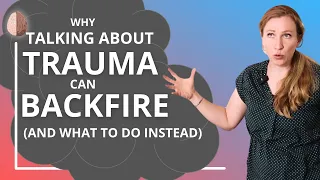In this episode I’m going to teach you another way to process emotions. Today you’re going to learn six ways to journal for depression and anxiety. It’s something you can do on your own, and it’s a powerful way to work through the jumble of thoughts and emotions that are all up in your brain.
In this post I’m going to teach you another way to process emotions. It’s something you can do on your own, and it’s a powerful way to work through the jumble of thoughts and emotions that are all up in your brain. Today you’re going to learn how to journal for depression and anxiety.
Therapists have this phrase “Make the implicit explicit,” and it’s basically a terrible phrase because it sounds like you’re doing something wrong. But all these academics are trying to say is to take something that is inside your head, something that is clouded and vague and implied, and make it clear and solid and external.
And when you look at all the hundreds of types of therapy, one thing that is common among all of them is this process of making the implicit explicit, taking the vague and making it solid.
And this is a really effective way to solve problems, to resolve internal conflicts and to soothe painful emotions like depression or anxiety. And the common way that you do this is by talking about it, by trying to explain it or describe it out loud to your therapist. But there’s a ton of other ways to do it too.
So today I’m going to teach you six ways you can improve your mental health through writing.
Okay, so when you have a lot of pain or distress, when you’re anxious or upset or overwhelmed, it’s easy to feel like a situation is hopeless or to feel conflicted about what action to take. Like, should I be selfless with my teenager and serve and love them, or should I set boundaries and demand that they treat me with respect?
Things can feel really confusing. Or sometimes a problem is so overwhelming that we can’t even figure out what is wrong.
Going to a therapist can help you sort through all these confusing thoughts and feelings, and of course I recommend that, but most people only see a therapist one hour a week, and some people can’t get to a therapist. So here are six easy ways to sort through your crap on your own.
So let’s start with the first.
1. Journal for Depression and Anxiety
Journaling is really simple; you just write about what you’re feeling or thinking or experiencing. Journaling can help you track your moods or identify triggering situations. It can help decrease anxiety and stress, and it can also help you gain a clearer perspective on your challenges.
Journaling has been shown to help your physical health too. It can lower blood pressure, help your immune system, and improve liver function. Writing can help you get to know yourself better and improve your relationships. Journaling has been shown to improve mood and fight depression.
Matthew Lieberman, a Psychologist at UCLA, said “Brain scans on volunteers showed that putting feelings down on paper reduces activity in a part of the brain called the amygdala, which is responsible for controlling the intensity of our emotions.” Men seemed to benefit from writing about their feelings more than women, and writing by hand had a bigger effect than typing.
Journaling has even been shown to help people process trauma. In a study with college students, prompting those students to write about stressful or traumatic events helped them reduce stress, improve their mood, and even have better physical health.
Other studies have shown that writing about your stress helps people with asthma and rheumatoid arthritis improve lung functioning and decrease symptoms of arthritis.
So the simple act of taking 10 minutes every day to write about how you’re feeling can be really helpful to your mental and physical health.
2. Brain Dump
The second technique is the brain dump. I made a short video that goes into more detail, but the basic idea behind the brain dump is that when you are feeling really intense emotions or when you’re overwhelmed or upset, it can be really helpful to just take everything in your brain and get it down on paper.
For me, I actually use a computer because I can type faster than I can write. And the goal is not to make some beautiful cohesive narrative but to just dump your thoughts down into words. Don’t worry about spelling or grammar; just get your ideas out of your head and onto paper.
You’ll probably notice that if you do this you’ll feel an immediate sense of relief, or at the very least clarity.
3. Make a Diagram
The third way to process emotions through writing is to make a diagram. I do this in almost every therapy session. My clients come in with complicated and complex problems. I can’t keep track of all the issues, and it’s hard to know what to work on first. So in almost every session I’m using the whiteboard or a piece of paper to keep track of ideas.
Sometimes we make lists. Sometimes we write down all the separate problems and use that to keep our focus on just one of them at a time. I use charts to help clients clarify what’s going on. I honestly couldn’t function as a therapist without drawing, writing, or listing things in session.
Try it out — make a diagram or a chart exploring your problem, and see if that helps bring some clarity.
4. Write a Letter You Won’t Send
I use this activity quite frequently with teenagers and with trauma survivors. Sometimes you have things you want to say but you’ll never get the chance to say them.
Maybe your parents just aren’t able to hear what you need or your abuser will never be in a place to take accountability for what they’ve done. Maybe the person you need to reconcile with is dead or you have no way to reach them. Or maybe you have things to say but you’re not ready for anyone to know them yet.
In this situation, writing a letter that you never send can be a way to get some closure on a situation. It helps you express your needs, wants, and wishes without expecting any kind of change on their part. So write the letter, tell them what you need to say. Burn it afterwards or flush it or save it or mail it, whatever you want. It’s the process of expression that leads to healing.
5. Clarify Your Locus of Control
This is really simple but really powerful. Make a chart with three columns. In one, write about what is in your control. In the other, write about what is out of your control. In the third, write about things you can influence but can’t control.
Again, I made a longer video about this, but it’s a pretty straightforward concept with some really powerful outcomes. It can help you with stress, anxiety, and finding clarity about what action to take and what to let go of.
6. Write an Alternate Version of a Situation
What we focus on we get more of. So instead of constantly focusing on problems, this writing activity encourages you to bring your attention to solutions, to the things you want more of in your life.
Write about how you would like things to be going. Write in detail about how you would like to be feeling and how you would like to be handling a situation. Write about what would be different if you were living the life that you valued. Spend time writing an alternate version of how you would be acting or feeling.
Focus on the things that are in your control instead of dwelling on what you wish would change outside of your control.
So, for example, let’s say that you’re unhappy in a relationship. When you write out this idea you could choose a couple of alternate endings. One may look like writing about yourself expressing gratitude, feeling forgiveness, falling back in love with your spouse, and seeing the positive.
You may write about feeling those feelings of warmth and humor that you used to have in the relationship — basically bringing to mind the things that you value and that you love about yourself and your spouse.
Or you could write about what it would look like if you got the courage to leave an abusive relationship, what it would look like if you had healthy boundaries, if you believed in yourself and your right to be loved and safe. Write about the actions you would take to get your life back and live your dream.
Conclusion
So there you have it. Six ways to help yourself process through your thoughts and emotions with just a paper and a pencil. Hope you found this helpful. If you want to go deeper, check out my course, Journaling for Mental Health below. Thanks for reading, and take care.





